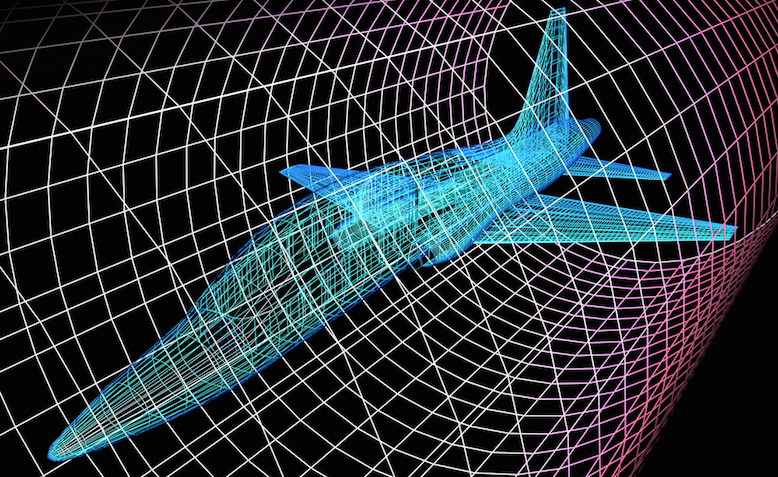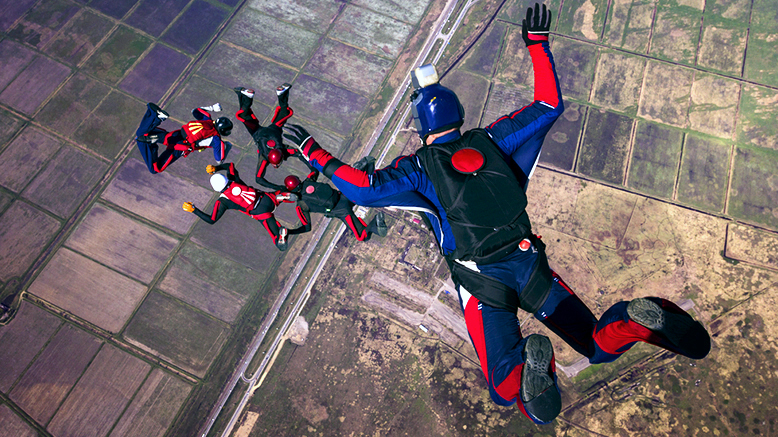Outdoor skydiving is simple: jump out of an airplane, let gravity do the work, and pull the parachute. But how does indoor skydiving work? How do they get you floating in that tube? Let’s talk about how indoor skydiving works.
History of the Wind Tunnel
Ever seen a tunnel with air blowing past an object at high speed? Usually it’s a mock-up of an airplane or car in it? Yeah, that’s a wind tunnel.
All indoor skydiving facilities are wind tunnels (unless someone developed anti-gravity and forgot to tell the rest of us). Wind tunnels were created to study the way air moves past an object. Huge fans that are measured in hundreds of horse power, push air past an object. This way they can study how well the plane will fly. They even do this with cars now. They do this will cars to study how they can get cars to use less power to gain speed as they’re driving.
Vertical Wind Tunnel
Now imagine that wind tunnel going up and down. That’s the basic premise of the vertical wind tunnel. Mostly it’s used recreationally, though sometimes they’re also used to study VSTOL and helicopter flight.
There are two types of vertical wind tunnels: non-recirculating and recirculating. Non-recirculating wind tunnels pull the air from the outside through the bottom and then push it to the top.
In recirculating tunnel, huge fans are placed at the top. They pull air through the flight chamber and then force that same air down the sidewall. The sidewall is adjacent to the flight tunnel. This air is then compressed and forced back up in the air tunnel. It makes a huge square. These are the types of wind tunnels used at places like iFly.
This way, the force of the air keeps you aloft and gives you that feeling of flying. The air is going fast enough to counteract gravity.
Terminal Velocity
So how fast does the air need to go to keep you aloft? It needs to go at terminal velocity. “Terminal velocity is the highest velocity attainable by an object as it falls through the air.” The air moves upwards at around 120 mph. This is terminal velocity of humans moving through the air. By counteracting the force of gravity with equal or greater force (Newton’s Third Law), you have floating. By giving you a little more of a shove, you have flight.
See, and you thought all of that physics non-sense you learned in school wouldn’t be useful.
Wind Resistance
Studying Wind Resistance is important for a good amount of human athletic endeavors. Ever wondered why cyclists ride in that super awkward position? Yeah, they studied that in a wind tunnel. That’s the optimum way to position your body while cycling. That’s why the helmets are shaped that way, so that air flows around the helmet and decreases drag.
Humans in a wind tunnel operate the same way. If you’re just floating with your belly facing the ground with your arms spread out, you’ll create more wind resistance and float. Conversely, if you point yourself straight down, you’re going to hit the ground, even in a wind tunnel.
The Controller
That’s why there’s a controller in every indoor skydiving facility. He or she doesn’t just push a button and walk away once you step into the chamber. Just like a scientist at a laboratory, the controller at the indoor skydiving facility maintains a steady flow and watches for anything that could ruin the flyer’s time.
So that’s how indoor skydiving works. Please don’t blow past the comment section, leave us a note. And don’t forget to like us on Facebook and follow us on Twitter.
Have fun flying!














